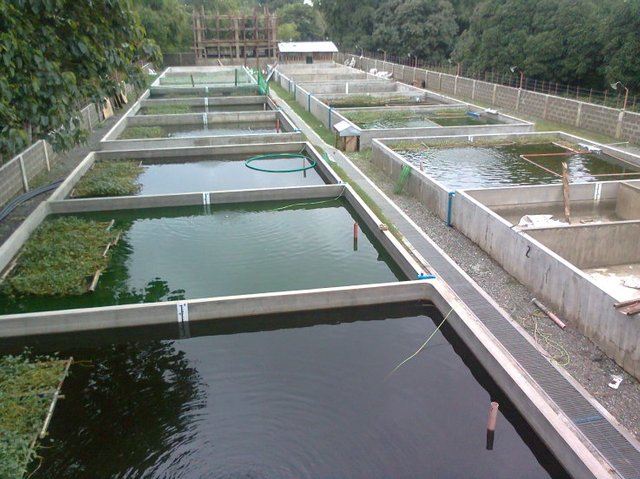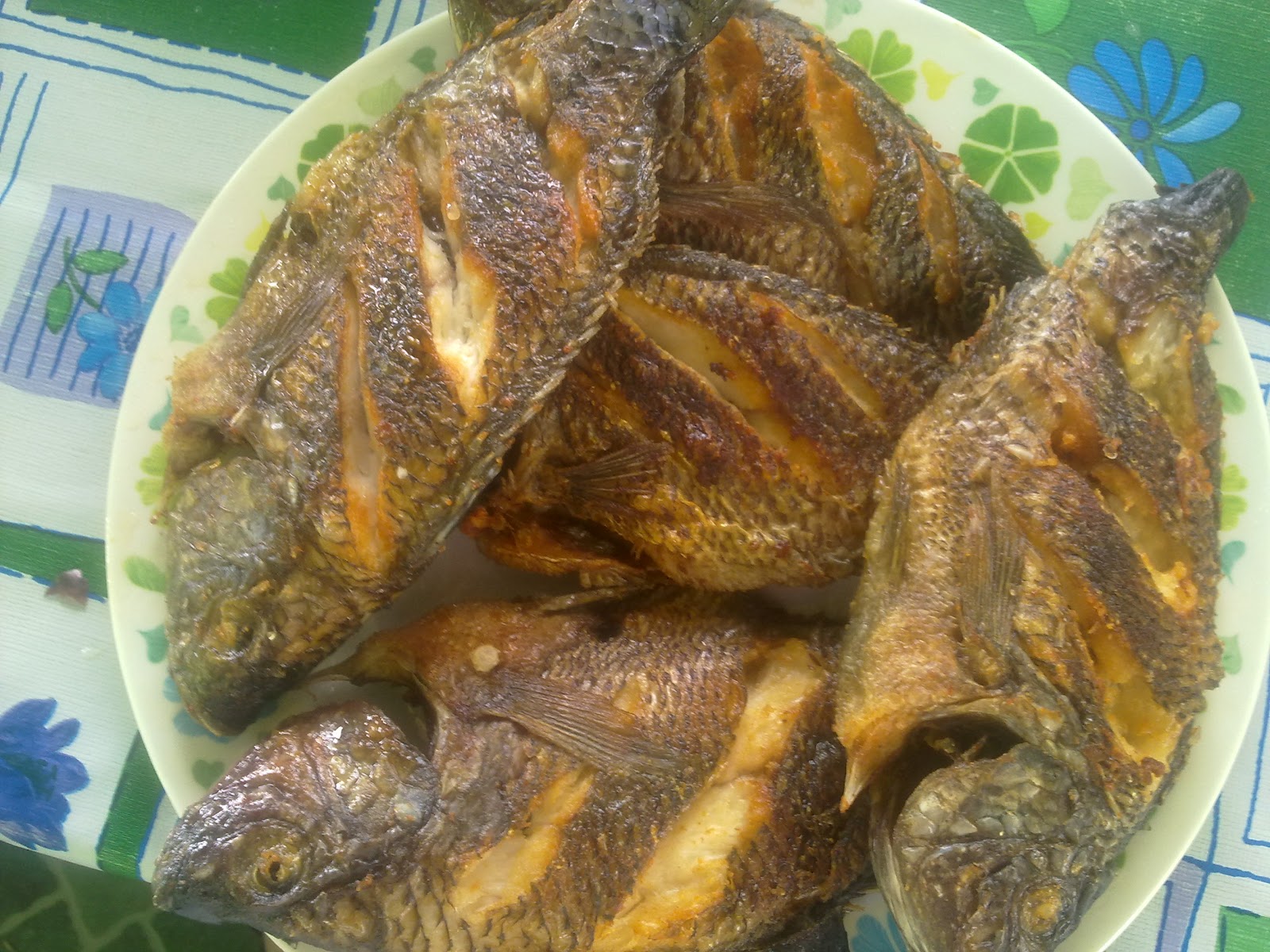THE TRUTH ABOUT THE TILAPIA FISH
I will share about the TILAPIA FISH and i hope it can help for all the people who is eating TILAPIA FISH around the world.

Famed as the food of pharaohs in ancient times, tilapia is the world’s second most farmed fish (after carp)—and the fourth most consumed type of seafood in the U.S. (after shrimp, tuna, and salmon). The term tilapia actually refers to several related fish species that originated in the Middle East and Africa but are now farmed all over the world. Though its production is growing in the U.S., most of the tilapia we eat here is imported from Asia and Latin America.
If you eat fish, you have probably already had tilapia (sometimes called St. Peter’s fish) even if you didn’t know it. That’s because tilapia—like other inexpensive fish—is often fraudulently sold in markets and restaurants as red snapper, grouper, tuna, or other expensive species. In contrast, there’s far less chance of bait-and-switch if you order tilapia itself.
Nicknamed “aquatic chicken,” this fast-growing fish is both lauded as an excellent source of protein that’s “vital for building muscle” and denounced as a food that’s “worse than bacon" (see inset at bottom of article). Advocates assert that tilapia farming can help relieve pressure on the world’s diminishing wild fish populations, while opponents cite health and environmental issues. Who’s right? The answer is not so black and white.

THE NUTRITION ANGLE
Tilapia is a white-fleshed freshwater fish that’s mild in flavor, which makes it appealing to people who don’t like “fishy” fish. It’s relatively low in calories (130 per 3.5-ounce serving, cooked) and rich in protein (26 grams). But if you’re looking for a lot of heart-healthy omega-3 fats, tilapia is not a good choice. It has very little fat—2 to 3 grams per serving, of which less than 0.2 grams is omega-3s (in contrast, both wild and farmed salmon have more than 1.5 grams of omega-3s per serving). Farmed tilapia is particularly low in omega-3s because its diet is predominantly corn- and soymeal-based, in contrast to the omega-3-rich algae and other aquatic plants that wild tilapia feed on.
THE ENVIRONMENT ANGLE
Fish farms, when not properly managed, are infamous for having adverse effects on the environment, which include the polluting of water and the spread of disease to wild fish when farmed fish escape their pens. Overseas tilapia farms, like salmon and shrimp farms, tend to have a bad reputation, though new regulations and certification programs may slowly be changing that.
According to the Monterey Bay Aquarium’s Seafood Watch Program—which makes recommendations for purchasing seafood that’s fished or farmed in environmentally sustainable ways—farmed tilapia from the U.S., Canada, and Ecuador are “best choices.” And though much (if not most) fish from Asia get a red light, Seafood Watch upgraded tilapia produced in China and Taiwan from its “avoid” list in 2011 to its “good alternative” list in 2014. These fish are still not considered a “best” choice, however, because of continuing concerns about waste management and the use of chemicals. Similarly, the Seafood Selector from EDF (Environmental Defense Fund) gives tilapia from the U.S. and Ecuador a “best” eco-rating and lists tilapia from China and Taiwan as “okay.”

Tilapia farms in the U.S. and Canada rate well because they typically use closed recirculating tank systems, which alleviate problems of water pollution and fish escapes. In Ecuador, tilapia are typically farmed in freshwater ponds at low density (meaning the fish are not crowded), which reduces disease, the need for chemicals, and water pollution.

THE CONTAMINANT ANGLE
What about drug residues, a major concern with most imported seafood? Tilapia is not exempt from contamination, though this depends on where and how it’s farmed. As we previously reported, veterinary drug residues were detected in tilapia (and other fish) that were inspected by the U.S., Canada, and the European Union between 2000 and 2009, according to a 2011 paper in Environmental Science and Technology.
And a 2014 paper in the Journal of Hazardous Materials found antibiotic residues in farmed fish purchased in the U.S., including tilapia from Panama and China. Though levels were relatively low, the authors note that the use of antibiotics in fish farming could nonetheless be contributing to the growing public health problem of drug-resistant bacteria.
On the other hand, an analysis in the open-access Journal of Food Processing & Technology in 2013 reported that of 36 samples of imported tilapia—mostly from Latin America—none tested positive for anti-microbials (chloramphenicol, malachite green, and gentian violet), though results may have differed, the researchers said, had more samples from Asia (particularly China and Vietnam) been included. This study also looked at mercury, cadmium, arsenic, and lead in tilapia. All samples had detectable residues of at least one of these heavy metals, but at levels well below safety action thresholds set by the FDA.

HERE IS THE BOTTOM LINE:
Tilapia is popular for good reason—it’s inexpensive and widely available, plus it “goes with everything.” And though it’s not rich in omega-3s, it’s a good source of lean protein and is better for you than fatty meats like burgers and bacon. It can clearly be a part of a healthy diet if you like it, though as with all fish, we recommend you vary your intake and look for responsibly farmed (or wild-caught) sources.
I hope that you like my TIPS...
support healthy food and upvote, re-steem...
Support and follow the @healthiswealth blog and @kennyroy
Credited by: Berkeley Wellness
Well i really like tilapia so i will probably stick with it since the wild ones are expensive, but im going to eat less now thanks for the information dude.
You are welcome... tilapia is good but let us make moderate eating of this... 😇
Those roasted tilapia look so tempting and yummy. Great shots btw.
Yes it is yummy... with tomatoe, onion with fish sauce and calamansi or lemon... including ricea, wow... hehehe... deliciouso... 😆👌
Absolutely! A combination of these ingredients will yield an amazing result.
It appears you are a rice lover! If so, we have a fun going on about people that love eating rice via https://steemit.com/food/@globalfoodbook/please-identify-yourself-if-you-are-a-rice-lover
Please feel free to join in the conversation about #ricepeople if you like rice dishes. Many thanks
I will hehehe... rice lover!!!
😄 😄 😄
so much i never knew about talapia
Hehehe... one of the very famous fish in the world... and low price in time... try in your place to buy one of this and STEEM IT in foil! Hehehe... 😆
Great article @kennyroy I do love tilapia and this was interesting for me.
Thank you so much @sunscape... follow my healthy blogs about food tips and upvote... and upvoted your comments to see by the other people also...
I followed you so I can read all your healthy food tips. thanks.